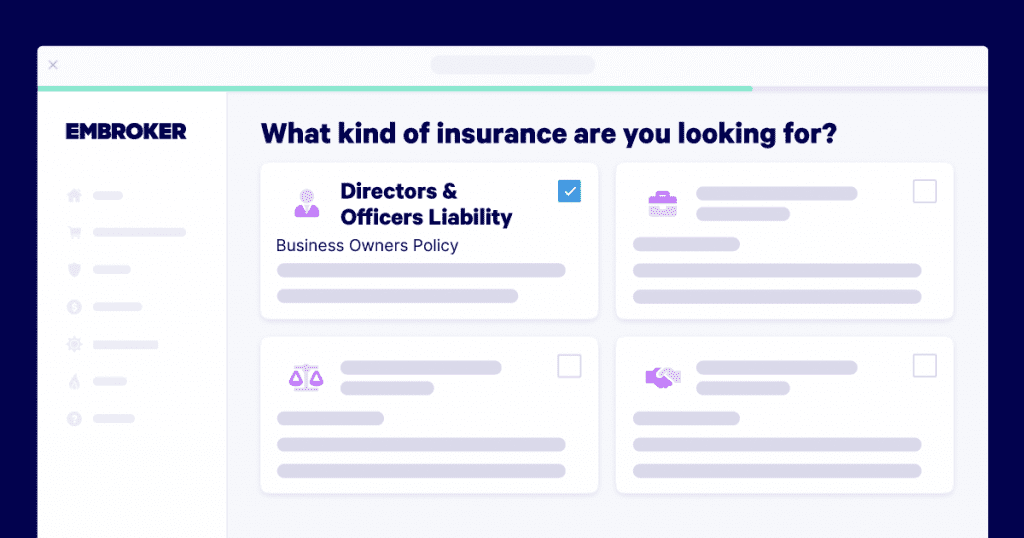Cyber Insurance for Tech Companies Guide

Nowadays, it seems like seeing headlines about another cyberattack affecting an organization is a daily occurrence.
If you’ve seen those headlines and thought, “That will never happen to my business,” you could be risking your company’s future.
In fact, a research study in the U.K. found that businesses are 67% more likely to experience a cyber incident than a physical theft and five times more likely than a fire.
The risk of a cyber-related incident is never-ending. But cyber insurance can be a saving grace for tech companies. financially vulnerable by not having cyber insurance is like a ticking time bomb for irreversible damages — it’s more important than ever for tech companies to protect themselves from potential financial losses due to cyber incidents.
Curious about what cyber insurance for tech companies is all about and how it can benefit your business? We’ve compiled this guide covering what tech companies need to know about cyber insurance.
What Is Cyber Insurance and Why Is It Important for Tech Companies?
While you’ve likely heard about cyber insurance, you might be wondering what it’s all about.
Also known as “cyber liability insurance,” cyber insurance is a policy that covers financial losses a business may face following a security breach or other cyber event. With cyber insurance, your tech company can transfer the costs of a cyber incident to your insurance provider.
In addition to covering costs for incidents such as data breaches and cyberattacks, cyber insurance also provides protection for liability claims and ancillary expenses related to a cybersecurity breach.
So why is cyber insurance important to have?
Take the major data breach experienced by Sony’s PlayStation network in 2011, for example. Cybercriminals stole the personal information of several million gamers, forcing Sony to shut down its PlayStation network for almost a month, which cost the company approximately $170 million. Following the incident, Sony (incorrectly) thought their general liability insurance policy would cover the costs of the breach. They wound up taking their insurance provider to court, where it was confirmed that Sony’s policy didn’t cover the breach damages.
Fast forward to 2014, when Sony experienced another breach. This time, however, they had a cyber insurance policy in place that would cover all of the estimated $100 million the company lost from the breach.
In today’s digitally interconnected world, it’s no longer a question of if but when a cyberattack will happen. And small businesses are no exception to the risk of cyberattacks.
Cybercrime has increased exponentially in recent years, and that trend is expected to continue in the coming years.
According to an Apple-commissioned study, “For U.S. organizations, data breaches are now at an all-time high.” It notes that in the first nine months of 2023 alone, data breaches in the U.S. increased by nearly 20% compared to all of 2022.
The FBI’s Internet Crime Complaint Center’s annual Internet Crime Report indicates that a record 880,418 complaints were received nationwide in 2023, and potential losses exceeded $12.5 billion. Those figures represent a nearly 10% increase in complaints and a 22% hike in losses compared to 2022.
On a global scale, cybercrime is expected to cost $9.5 trillion this year, according to Cybersecurity Ventures, which has projected the damages will reach $10.5 trillion by 2025.
Given the occurrence rate and associated costs, it’s no surprise it’s becoming increasingly difficult for tech companies to successfully manage the financial repercussions of cyber incidents without cyber insurance protection.
What Cyber Threats Are Affecting Tech Companies?
Unfortunately and maddeningly, cybercriminals are crafty at finding new ways to infiltrate networks. After all, the technologies that benefit tech companies and other businesses, such as AI, also benefit cybercriminals.
That’s why understanding the types of cyber threats your company may encounter is pivotal to protecting your organization.
Among the cybercrimes that business owners need to be aware of is the rise in attacks involving business email compromise (BEC) and business communication compromise (BCC). These attacks deceive individuals into performing actions such as transferring money or sharing sensitive data externally. With AI tools and deepfake capabilities now readily available, cybercriminals use deceptive emails and fake phone calls or meetings to pose as executives to get employees to transfer money. In 2023, BEC was among the costliest cybercrimes in the U.S., with $2.9 billion in reported losses.
Another financially cumbersome cyber incident is ransomware, a type of malware that blocks access to software or files until a specified “ransom” is paid. After a brief downturn in 2022, ransomware attacks rose again in 2023. According to Sophos’ “The State of Ransomware 2024” report, the median ransom payment has reached $2 million, up substantially from the median payment of $400,000 reported in 2023. The FBI has indicated that emerging trends in ransomware involve “the deployment of multiple ransomware variants against the same victim and the use of data-destruction tactics to increase pressure on victims to negotiate.”
Other cyber threats that tech companies need to be aware of include third-party exposure, DNS tunneling, insider threats (intentional and unintentional), state-sponsored attacks, and cloud vulnerabilities.
Keep in mind that cybersecurity threats are constantly evolving as cybercriminals leverage new technologies to target organizations. That’s why it’s crucial to regularly assess your company’s cyber risk as part of your cyber risk management strategy.
Assessing cyber risks, which involves detecting security gaps, understanding potential cyber threats, and ranking risks based on probability and impact, will enable you to take the proper steps toward controlling and mitigating cyber threats and help determine how much cyber coverage you need.
Check out our cybersecurity risk management guide for more information on assessing cyber risks.
What Does Cyber Insurance Cover For Tech Companies?
As mentioned, a cyber insurance policy allows your tech company to transfer the costs of a cybersecurity incident to your insurance provider.
Every comprehensive cyber insurance policy should include coverage for:
Notification expenses: Any business that encounters a cybersecurity incident is responsible for identifying and notifying potential victims, which requires an investigation.
Credit monitoring services: Cyber insurance pays for costs associated with credit monitoring for those affected by a cyber incident at your business.
Computer forensics: Once a cyber event is identified, determining what happened, how, and the overall scope is crucial. Expenses spent on hiring a computer forensics specialist are covered by cyber insurance.
Reputational damage: Reputational fallout after a cyber incident can have a devastating impact. You’ll want to ensure a cyber insurance policy covers public relations and crisis management expenses.
Digital asset loss: This pertains to the loss of digital assets, such as cryptocurrencies, intellectual property, or digital media.
Ransom demands: With cyber extortion like ransomware attacks, cybercriminals will demand payment from victims to have data restored. Cyber insurance coverage can help businesses cover the costs of ransom demands.
Legal expenses: If you get sued by clients or partners affected by the breach at your business, are you prepared to cover the legal costs and damages? With a robust cyber insurance policy, you won’t have to worry about that.
Business interruption: This is to cover losses if your business needs to close temporarily due to a cyber incident.
Recovery, remediation, and restoration: Cyber insurance policies can help cover the expenses involved in recovering from an attack and restoring systems to get operations back up and running.
First-Party vs. Third-Party Cyber Insurance
One of the unique aspects of cyber insurance is that it has two coverage categories: first-party and third-party.
First-party cyber insurance protects tech companies from losses that are the direct result of a cyber event. It addresses the financial impact on a business’s operations, assets, and reputation, and would cover expenses related to:
Data recovery or replacement
Notification costs for informing customers and stakeholders
Forensic investigation to determine the cause and extent of the cyberattack
Lost income due to business interruption
Crisis management and public relations
Credit monitoring and other protection services for affected individuals
Cyber extortion and fraud
Any business that handles digital data should have first-party coverage to protect against expenses that may arise if their network is compromised.
On the other hand, third-party cyber coverage will protect your tech company from claims made against it by third parties, such as clients, customers, and partners. This coverage handles costs related to:
Settlements relating to disputes or lawsuits
Legal fees
Regulatory fines
Your insurance provider can help explain the best coverage options for your company.
Does Cyber Insurance Replace Cybersecurity Strategies?
People often ask if cyber insurance is a substitute for cybersecurity strategies.
The answer is absolutely not.
Cyber insurance is one component of an overall cyber risk mitigation strategy, but it’s not a replacement for proactive cybersecurity practices. In fact, think of cyber insurance more as your last line of defense against cyberattacks.
Practicing good “cyber hygiene” is essential for mitigating exposure to data breaches, and will also help keep cyber insurance costs down. Having good cyber hygiene means developing routines and behaviors that help keep your company’s cyber health in check, starting with training and educating your employees about cyber threats.
Making cybersecurity awareness a part of your organization’s culture is hands-down the best defense against emerging cyber threats, considering the majority of data breaches are caused by human error.
Other cybersecurity best practices — like multifactor authentication, encrypting devices, backing up files regularly, implementing a password management policy, securing routers and Wi-Fi networks, and reducing unnecessary employee access to data — combined with having cyber insurance coverage can go a long way towards ensuring your tech company’s future isn’t jeopardized by cybercriminals.
Want to learn about cyber insurance options for your business? Contact our team of expert brokers at any time to find out how you can protect your business from being financially hindered by cyber-related incidents.
How to Choose the Right Cyber Insurance Policy?
One of the most important things to look for in cyber coverage is what’s included under the policy in the event of a cyberattack, and whether any specific incidents are excluded from coverage.
The last thing you want is to be blindsided with fees you thought were covered when disaster strikes.
So before you sign any agreement, read the policy thoroughly to understand the terms and conditions, and ensure you have the right coverage based on your company’s unique needs and risk profile.
When a cyberattack happens, time is of the essence. That’s why it’s best practice to learn about a prospective insurer’s claims process for cyber incidents. Look for a straightforward claims process or, better yet, dedicated claims assistance for cyberattacks.
While cost shouldn’t be the only factor when choosing cyber coverage, it’s understandable that it is a consideration. Cyber insurance costs will depend on the type of company you operate and its exposure to cyber threats. Factors that may impact cyber insurance policy premiums include:
Company size
Amount and sensitivity of data
Annual revenue
Existing cybersecurity measures
Coverage limits and deductible
Knowing your company’s cyber risks is an important part of ensuring you get the right coverage with an insurer that will provide protection tailored to your organization’s specific needs.
Want to learn about cyber insurance options for your business? Reach out to our team of expert brokers for more detailed information on how you can protect your business from the financial burden of cybersecurity incidents.


